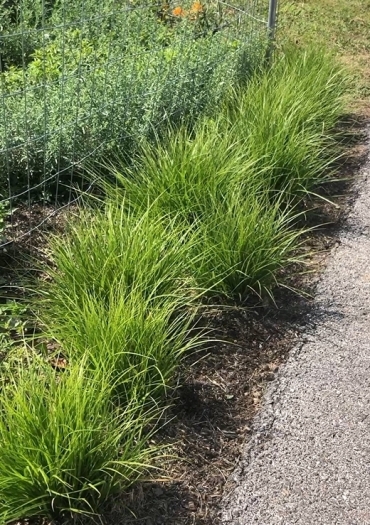Bicknell’s Sedge
(Carex bicknellii)
Bicknell’s Sedge (Carex bicknellii)
/
/

© Andrew Conboy
CC BY 4.0
Image By:
© Andrew Conboy
Recorded By:
Copyright:
CC BY 4.0
Copyright Notice:
Photo by: © Andrew Conboy | License Type: CC BY 4.0 | License URL: http://creativecommons.org/licenses/by/4.0/ | Uploader: conboy | Publisher: iNaturalist |

























Estimated Native Range
Summary
Carex bicknellii, commonly known as Bicknell’s sedge or copper-shouldered oval sedge, is a perennial herbaceous plant native to the central and eastern United States and Canada. It thrives in a variety of habitats including mesic to dry prairies, savannas, and open woodlands, often in calcareous soils. This sedge forms small, dense clumps and typically has fewer than 25 flowering stems per clump. It reaches a modest height of 1-3 feet (30-90 cm) and is characterized by its narrow, grass-like leaves and brownish-green, oval-shaped seed heads that appear in late spring to early summer.
Bicknell’s sedge is valued for its adaptability to different soil types and its low maintenance requirements, making it a suitable choice for native plant gardens, restoration projects, and naturalized areas. It is often used to stabilize soil and provide habitat for wildlife. In cultivation, it prefers full sun to part shade conditions and can tolerate a range of soil moisture levels, from medium to dry. While generally disease-free, it can suffer from root rot if planted in poorly drained soils. It is not known to be invasive or to have aggressive roots, making it a safe choice for gardeners looking to incorporate native grasses into their landscapes.CC BY-SA 4.0
Bicknell’s sedge is valued for its adaptability to different soil types and its low maintenance requirements, making it a suitable choice for native plant gardens, restoration projects, and naturalized areas. It is often used to stabilize soil and provide habitat for wildlife. In cultivation, it prefers full sun to part shade conditions and can tolerate a range of soil moisture levels, from medium to dry. While generally disease-free, it can suffer from root rot if planted in poorly drained soils. It is not known to be invasive or to have aggressive roots, making it a safe choice for gardeners looking to incorporate native grasses into their landscapes.CC BY-SA 4.0
Plant Description
- Plant Type: Grass
- Height: 2-3.3 feet
- Width: 1-2 feet
- Growth Rate: Moderate
- Flower Color: N/A
- Flowering Season: Spring, Summer
- Leaf Retention: Deciduous, Semi-deciduous
Growth Requirements
- Sun: Full Sun, Part Shade
- Water: Low, Medium
- Drainage: Fast, Medium, Slow
Common Uses
Bank Stabilization, Bee Garden, Bird Garden, Erosion Control, Low Maintenance
Natural Habitat
Native to mesic to dry prairies, savannas, open woodlands, often in calcareous soils
Other Names
Common Names: Long Beaked Sedge, Copper-Shoulder Oval Sedge
Scientific Names: , Carex bicknellii, Carex bicknellii var. bicknellii, Carex brevior var. crawei, Carex straminea var. crawei,
GBIF Accepted Name: